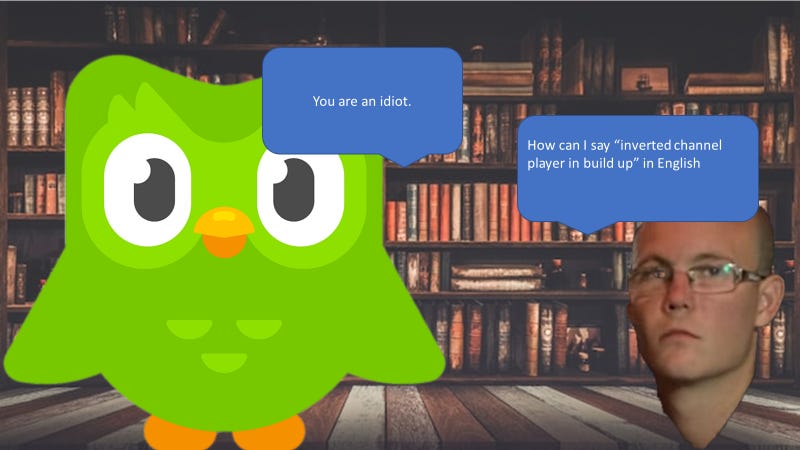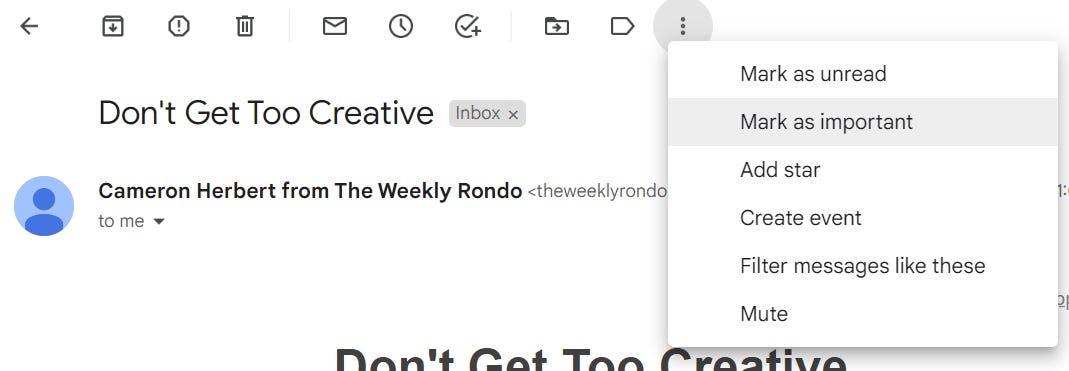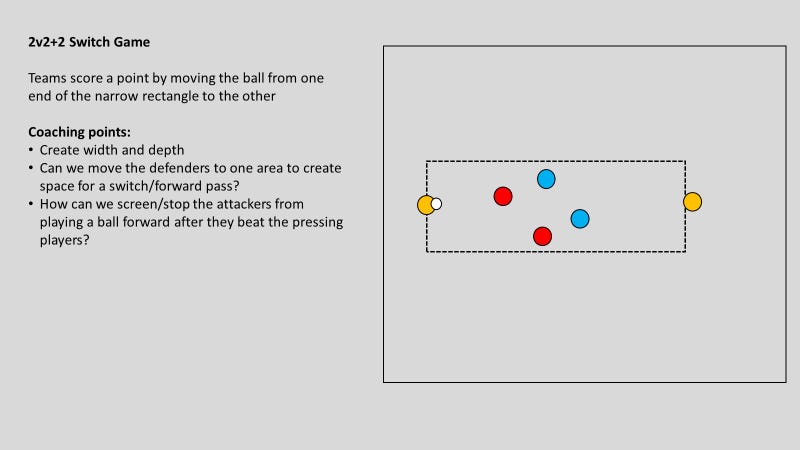Good morning! I want to talk about the importance of simplifying football language, especially in an academy or analysis environment.
Before we start, please check that The Weekly Rondo is marked as “important” in your inbox. Each week just under 50% of The Weekly Rondo readers open the newsletter from their inbox - that means you aren’t being shown the latest issue easily.
Neat Reads
Neat Reads is a segment where I share an article or podcast that interests me and relates to our weekly theme.
I don’t have any reading material related to our topic this week, but what I will do is share a new publication that needs support and readership.
SCOUTED Notebook offers a free and paid newsletter. I highly recommend checking them out.
Language learning is hard - even in football
Without a clear form of communication, ideas and actions will be misunderstood on and off the pitch. When working with players who have little to no English understanding, I used one to two syllable words that can help my players communicate with each other.
My players can communicate well in their native language and I’ll never try to stop that. However, I will include words that I know are used in North American soccer or Europe.
Some of those words might include:
Skip = let the ball go past you and to someone else
Bounce = return the ball to the person who passed it to you
Turn = no one is behind you/defending you
Time = Little to no pressure, you have time to hold the ball
Creating a form of communication everyone understands is invaluable on the pitch.
I wish that the same could be said for the current state of public analysis on Twitter. With the game becoming more and more global, there are more people using different ways to describe the same idea or picture that they’re seeing.
The problem is that most disagreements in observations can (and do) come from people not explaining themselves using a universal language when discussing tactics, roles and positions.
I don’t think public analysis will ever reach a point where we all agree on what is what, but it needs to be better. Most conversations these days are about the language used rather than the content being shared. It’s silly.
I don’t have a public solution to this. Instead, I have the luxury of creating an analysis “dictionary” for my players at Ascent Soccer who need not suffer the vernacular of Football Twitter users.
By defining what certain actions, moments in game, and ideas are we can be more productive as an academy when analyzing games and discussing how we can improve.
I won’t be sharing the analysis dictionary on my newsletter quite yet. So, stay tuned.
Coach’s Corner
Coach’s Corner is a segment where I ramble about training this week and answer some questions I get from Substack or Twitter.
Ramblings
I’m guilty of this myself, but I loathe how we describe players. “He’s a 9”, “He’s a 6”, “He’s an inverted reverse ollie triple sec channel player” and so on.
What is a “9” for example? Sergio Aguero and Erlin Haaland are 9s, but are also completely different players.
This type of description bleeds into the recruitment process, coaching environments and analysis departments. Without a streamlined way of determining who is what, we are not describing players and actions to the best of our abilities.
Public analysis doesn’t help solve this issue, but it’s a problem that club discussions are not too dissimilar to that of public work.
In fact, it’s concerning that some of your favorite clubs are kind of run on vibes.
Q&A
How can you coach if you’ve not played pro? Is it hard?
It isn’t hard. Players just want to learn and in my experience don’t really care where you’re from as long as you can teach them something. If you can’t teach them anything, then you may be hitting your ceiling and need to pursue further development.
When will Canada be considered a “soccer country”?
I don’t know what event has to happen for us to earn that title. Calling it a soccer country is a bad start.
Canada still has to earn the respect of the world. We don’t have a proven track record of producing talented players and we’ve qualified for a World Cup for the first time in 36 years.
Hosting in 2026 is a great start, but Canada won’t see the fruits of their labor until the generation of first time supporters turns their TVs on in 2026. That’s when the real work can begin in my opinion.
Questions can be asked anonymously if you’d prefer your name not to be included in the email. Just remember to mention that in your Twitter DM to me or in the comments below.
Exercise of the Week
I love exercises where I can use a few players to get a key tactical idea across.
The above game has six players in a narrow, long play area. The objective is to switch the ball to the other side.
You can use this to teach defending in a pair too!
Progression/Alteration:
Add offsides! In possession players cannot play the switch pass until they’ve broken the defensive line.
Give the defenders license to push forward, forcing the in possession team to receive and turn from in front of the defenders.
Conclusion
Thanks for reading this week!
I’m always interested to hear your thoughts and ideas so please feel free to send me a message on Twitter or leave a comment above in the Q&A section.
Share this newsletter with a friend or every single person you have ever met.
See you next week!
Where to find me:
Medium: https://medium.com/@cameron-herbert
Twitter: https://twitter.com/CamH___
LinkedIn: https://www.linkedin.com/in/cameron-herbert-football-coach/








I also loathe describing players as a 2, 3, 4, so on and so forth. I would rather describe them as an attacker, defender, midfielder depending on their predominant instinct - that is whether they enjoy scoring or distributing the ball or protecting the goal.
And by the way, Malawian kids are more familiar with leave than skip Lol. Have you noticed?